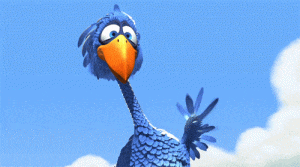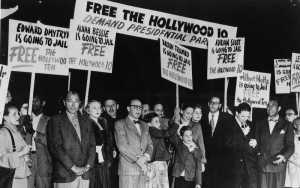Hello, Internet.
So, as I’ve mentioned in previous posts, we’re currently reading a play called The Crucible, by Arthur Miller.
We’ve had to do a series of posts thematically related to this play, but so far I haven’t done any posts that talk much about it directly. Let me give you a quick rundown of what it’s about.
The Crucible is set in Salem during the 1690s, when the Salem Witch Trials took place. It follows the events of the town accusing each other of witchcraft, due mostly to a girl called Abigail Williams lying and manipulating others into lying in order to cover up an affair she had with a farmer named John Proctor. A few dozen innocent people are accused of witchcraft and tried, jailed, or killed. Abigail and her followers pretend to be bewitched in order to support their case. Meanwhile, John Proctor, with the encouragement of his wife Elizabeth, attempts to confess to the court that he had an affair with Abigail, and to tell them that the witchcraft is made up and the people on trial are innocent.
Although the play was based on historical events, it would probably be more accurate to say that it historically reflects the time period in which it was written: the 1950s. During this time, America was on the verge of war with the Soviet Union, and many citizens were suspicious or afraid of the possibility of communist spies among them. Many people, especially those involved with Hollywood, were brought to court and had trials to determine whether they were communists or had ever been communists. Anyone who did something to upset the smooth workings of American society had their name put on the blacklist, and wouldn’t be able to find work.
Of course, much like the “witches” in The Crucible, many of the people whose names were put on the blacklist were actually innocent victims who got caught in the crossfire of society’s fear. Some accusations ended up being false or misguided, and some of these innocent people ended up getting their lives ruined anyway.
This is all leading me to the point of this post: the actual prompt I’m completing this week. For my final post of three, I decided to use this prompt:
Think of an image from the play and use that image to create a spatial poem or something similar (an image? a photo essay?).
While a lot of the play doesn’t involve strong images, there was one that stuck with me– a scene in which Abigail, quickly joined by her lackeys, pretends to be seeing and interacting with a small bird in an attempt to condemn Mary Warren. I decided to create a visual representation of this bird out of quotes from the text– and more specifically, lies, since that’s what the bird is made out of in the play.
I colour coded the quotes in order to make it easier to separate them by character. Everything written in black is a lie told by Abby (or a quote from the scene where she is pretending to speak to the bird, which are less lies and more just false actions). Everything written in purple is a lie from Tituba, largely from the scene in which she is describing having allegedly spoken with the devil. Everything in green is a lie from Mary Warren, mostly about being “bewitched” in a court session, which she later admits is a lie Abigail made her tell.
In the center of the bird is one quote in yellow– the single and ultimately damning lie told by Elizabeth Proctor in an attempt to save her husband. I wanted his quote at the center of the bird for a couple reasons– firstly, because the moment it’s pulled from is one of the most important in the story; the climactic ending of act three. Secondly, I wanted it around the “heart” of the bird, because while almost every other lie in this play is spoken in some form of self preservation, Elizabeth lies selflessly, in an attempt to save the man she loves.
All in all, I thought creating a visual representation of the fabricated bird out of all the layers of other fabrications throughout The Crucible would be a nice way to summarize the play, and to wrap up this series of blog posts.
Toodles.




